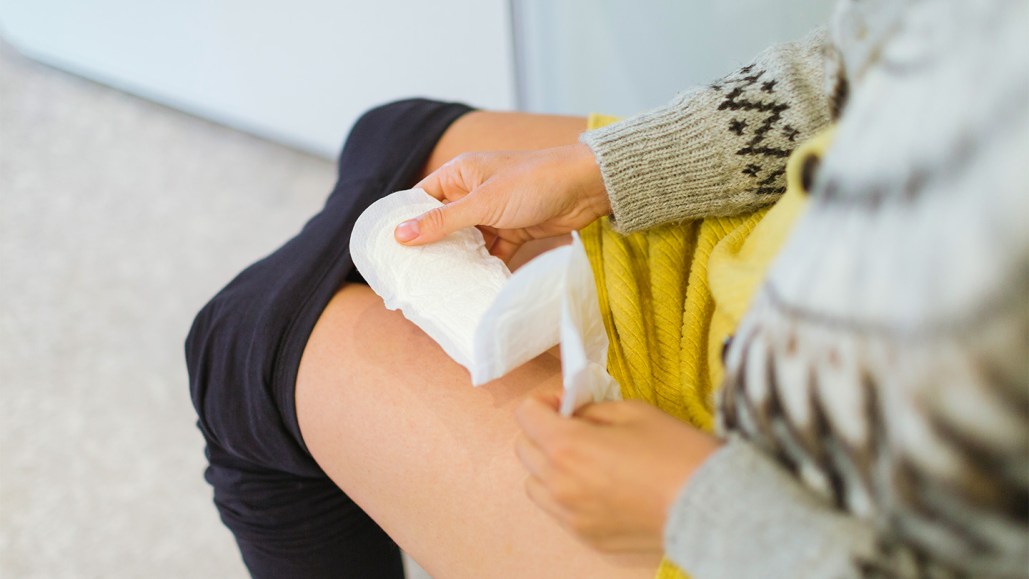Innovative Algae-Based Menstrual Pad Promises Leak Protection

Menstruation can be messy and uncomfortable, often due to leaky pads, tampons and cups. A new alginate-based powder may solve that problem. The material, which solidifies menstrual blood by turning it into a gel mixture, could reduce leakage in period products without compromising capacity, researchers report July 10 in Matter.
“Our paper is a proof of concept,” says Rogério Aparecido Bataglioli, a chemical engineer at Virginia Tech in Blacksburg. Before being used commercially, he says, the materials would need to be assessed for safety and scalability.
Most menstrual pads use cellulose-based materials to absorb period blood. Though they are effective, many people who menstruate still struggle with leakage and mess.
To solve this problem, the team turned to alginate, a naturally occurring substance derived from algae and seaweed. After the researchers screened a large pool of potential polysaccharides — long chains of carbohydrate molecules — that could have blood-absorbing properties, alginate excelled at absorbing and gelling blood. It also has already been approved by the Food and Drug Administration for use in pharmaceuticals, food and medical materials.
To further improve the alginate’s absorption, the researchers added glycerol. They then tested the absorbency of these alginate-glycerol powders against commercial absorbents by sandwiching each between sheets of gauze. The team dripped modified pig blood through a model vagina to mimic menstruation before performing a squeeze test on the blood-soaked materials. Though both were good at absorbing the blood, when the simulated period pads with commercial absorbent were compressed, it was “like squeezing a sponge,” says Bryan Hsu, a microbiologist at Virginia Tech. With the alginate material, which gelled the blood, the pads leaked less under pressure.
To assess the leakage of alginate-based menstrual pads, researchers wrapped the new material in gauze and dripped pig blood on it. They then lightly centrifuged the pads on top of well plates to mimic compression and collect the leakage. They did the same thing for three other scenarios: no added material, commercial pad fillers and polyacrylate, the industry gold-standard superabsorbent polymer. Click through the slideshow below to see how each fared.
The team also tested their new material in menstrual cups. They packed the alginate-glycerol powder into a long and narrow cotton sheath that was then coiled around inside of the cup. After the blood entered the menstrual cup and encountered the alginate, it gelled. Then, the blood could be removed along with the cotton tube — and a new one could be reinserted — with minimal liquid mess. In solidifying the menstrual blood into a gel, Hsu says, the goal is to make menstrual cup removal and cleaning easier and tidier.
One limitation of the study, notes ob–gyn Abigail Liberty, is that the blood was defibrinated pig blood, which does not contain fibrin, a protein involved in clotting. Though she applauds the team for using blood instead of another model fluid, menstrual blood is “different than blood that’s just floating around the body,” says Liberty, of Oregon Health & Science University in Portland (SN: 4/16/24). “It’s secreted in a different way. It’s grown, it’s released in a different way.”
Due to a shortage of research on menstrual care and period products, Bataglioli and colleagues did not have a base of experimental techniques to draw from and adapt. Instead, they designed many of their methods from scratch. “That’s a message to the scientific community — there’s nothing out there,” says Zeinab Hosseinidoust, a biomedical engineer at McMaster University in Hamilton, Canada. “Even more important than the actual research that was done is the message that this work sends.”




